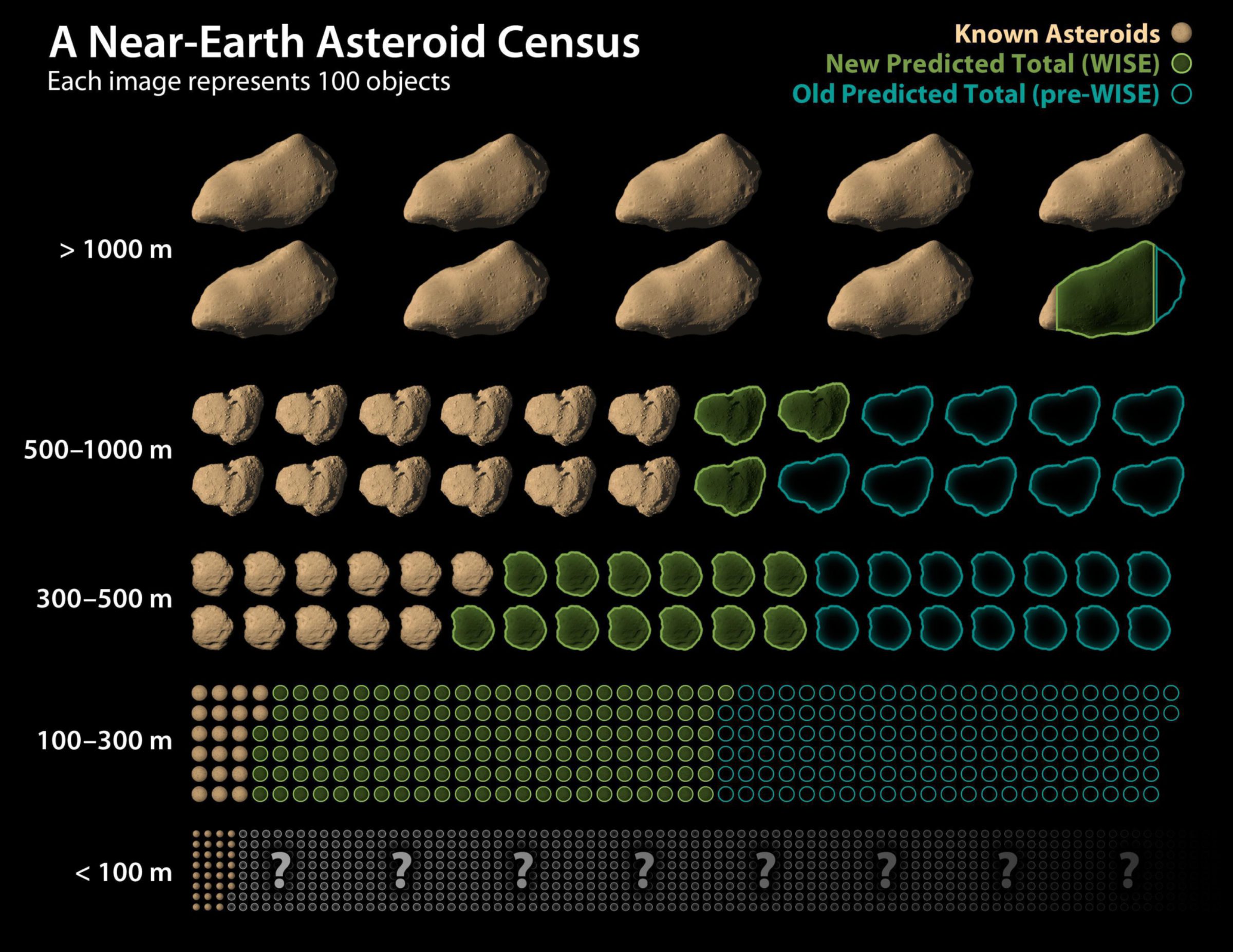WISE's near-Earth asteroid survey

For the largest asteroids, larger than 1,000 meters, NEOWISE data revises the total population down to 981 from a prior estimate of about 1,000. While this is not a dramatic difference, the findings show that NASA has met an initial near-Earth asteroid goal agreed to with Congress in 1998, calling for at least 90 percent of the largest objects to be found. There are an estimated 911 objects of this size range known, which means that NASA has found 93 percent. That leaves roughly 70 of these bodies left to find.
The NEOWISE data reveals an approximately 44 percent decline in the estimated numbers of medium-sized asteroids, which are defined as those objects between 100 meters and 1,000 meters. Estimates now indicate about 19,500, where as 35,000 were thought to exist before.
The study does not apply to objects smaller than 100 meters (330 feet), but it is estimated that there are more than a million in this size range, based on previous studies.


 Explore Worlds
Explore Worlds Find Life
Find Life Defend Earth
Defend Earth

